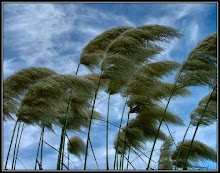Tangkuban Perahu (boat overturned)
 Tangkuban Perahu Crater is one of the attractions located in the southern region Kab. Subang, located at an altitude of 2084 m above sea level. Of natural beauty with a row of craters that stretch and cool mountain air and the expanse of the typical mountain other surrounding high-rise and the number of collections of plants and plants typical of tropical forests that flourished around the crater, making the boat Tangkuban as an attractive tourist destination in Subang regency.
Tangkuban Perahu Crater is one of the attractions located in the southern region Kab. Subang, located at an altitude of 2084 m above sea level. Of natural beauty with a row of craters that stretch and cool mountain air and the expanse of the typical mountain other surrounding high-rise and the number of collections of plants and plants typical of tropical forests that flourished around the crater, making the boat Tangkuban as an attractive tourist destination in Subang regency.Viewed from the city of Bandung, the mountain Tangkuban Parahu has a unique shape like a boat upside down (Bahasa Sunda: Tangkuban = reverse, Parahu = Boat). Unique form is believed to have a very close connection with the story Sangkuriang legends.
Enjoying the view from the crater Tangkuban Queen Boat, like seeing a giant bowl of very large and deep. When the weather clears, the curve of land on the crater wall of the crater base as well as can be seen quite clearly that it can provide a spectacular panoramic view. Glory craters so wide and deep, at least be able to force the viewer to pause and wonder for a moment the greatness of God's work.

Facilities and Tariff Entry
Gift Shop, Cafeteria and information center (TIC), souvenir shops, homestay, camping ground, outbound area, parking area, the area on horseback. The tariffs went into Tangkubanparahu attractions location of Rp 9000.
Accessibility
 To go to these attractions, visitors can use either private vehicles or 2 wheels or 4 wheels of public transport. The travel time to Sari Ater attractions, namely the town of Subang with travel time approximately 40 minutes to the south of Bandung, while around 50 minutes and from Jakarta via toll SADANG with travel time approximately 3 hours while the hot water attractions with travel time Ciater 15 minutes.
To go to these attractions, visitors can use either private vehicles or 2 wheels or 4 wheels of public transport. The travel time to Sari Ater attractions, namely the town of Subang with travel time approximately 40 minutes to the south of Bandung, while around 50 minutes and from Jakarta via toll SADANG with travel time approximately 3 hours while the hot water attractions with travel time Ciater 15 minutes.Condition of the road to this area, both from Subang and Bandung is very good. However, keep in mind about the condition of the vehicle, due to the location from Bandung and Subang will go through a pretty tough climb.











